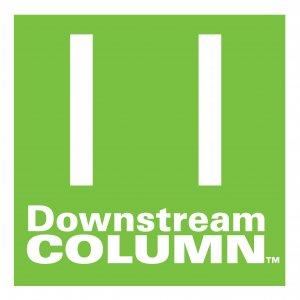The Downstream Column Podcast

Evolving Beyond the Status Quo with Next Generation Buffer Prep Solutions
In this podcast, we spoke with Chris Rombach, Vice President of Sales and Marketing at Asahi Kasei Bioprocess America about buffer prep and delivery systems. We discussed current pain points and how next generation buffer prep solutions can greatly improve upon the status quo, including increasing the use of automation and remote operation, while reducing the overall footprint, labor and cost associated with more traditional approaches.
Buffer Preparation – Source of bottleneck and pain points
We began the interview by discussing how buffer preparation is frequently seen as a challenging aspect of downstream processing and the source of bottlenecks. I asked Mr. Rombach why buffer preparation creates the potential for so many issues in downstream. He explained that there are several challenges regarding buffer preparation, primarily, the space that it requires, both from a physical and environmental perspective. The space also needs to be well segregated to eliminate contamination concerns from fugitive emissions during powder dispensing. He went on to say that another issue is the sheer number of different buffers that need to be used in a campaign, which require significant storage space, prep time, and material handling.
I then asked about the most pressing pain points in biomanufacturing. He shared that first, buffer prep is a low value-add activity, but it has substantial impact on facility design, maintenance, and human resources. It is a challenge to be able to coordinate having all the right buffers available on demand.
In addition, powder inhalation and exposure are a growing concern for the operators. The current techniques are still fairly rudimentary and they do not address ergonomics in many cases. Most importantly, you must have a segregated facility with a dedicated space for weighing and dispensing of the powders, hydrating, and blending.
Buffer Preparation – Process improvements
We then discussed how buffer preparation methods have stayed rather static for many years, maybe because of the perception that buffer prep is low value add. Recently however, there has been a shift toward improving the process. I asked Mr. Rombach to explain process improvements like inline buffer formulation and how it compares with inline buffer dilution.
He explained that inline buffer formulation differs from inline buffer dilution in that buffer formulation allows you to create complex buffer solutions, some with as many as 6 to 7 constituents, and this is done via precise flow control, pH, and conductivity measurement. Buffer dilution, on the other hand, is simply the volumetric dilution of a single constituent with a solvent, most typically water. Inline buffer formulation results in a much more precise output, particularly if there are slight variables in the input materials.
For example, if your concentrate solution changes from a 3 molar solution to a more concentrated formula solution, the machine can auto tune itself to provide the desired output based on a well-defined finished product specification and real time measurement of key parameters, namely pH and conductivity.
Inline Buffer Formulation
I then asked how an inline buffer formulation approach can address the common challenges we discussed earlier. He stated that it has the potential to significantly reduce the number of inputs that you use relative to their concentration because it can detect the level of concentrate that is coming to the machine and make sure that it meets the specification requirements. Secondly, the real time monitoring assures product consistency from batch to batch and therefore eliminates much of the typical testing and manipulation of a handmade batch. Finally, by using concentrated raw materials and formulating on the fly, the customer can significantly reduce the footprint in their buffer prep area.






 Visit Podcast Website
Visit Podcast Website RSS Podcast Feed
RSS Podcast Feed Subscribe
Subscribe
 Add to MyCast
Add to MyCast